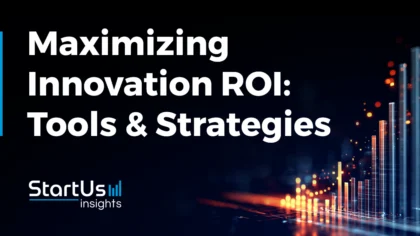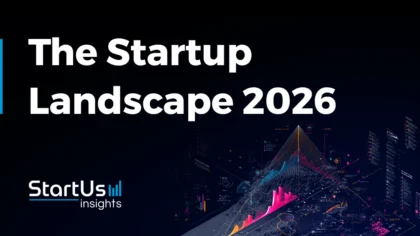Accelerate Productivity in 2025
Reignite Growth Despite the Global Slowdown
Executive Summary: Innovation ROI Metrics, Tools & Frameworks That Work
- Key Aspects of Innovation ROI: High-performing organizations measure learning speed, how easily they can adapt, and how much value they get from reusable data and IP assets.
- Proven Frameworks Driving Innovation ROI
- Stage-Gate (Idea-to-Launch): Divides innovation into structured phases, incorporating “gates” for resource decisions. Used by over 80% of North American companies, it increases product success rates to 63 to 78%.
- Lean Startup (Build-Measure-Learn): Supports fast minimum viable product (MVP) launches and real-time customer feedback. Nubank used this model to scale from 93.9 million customers in 2023 to 114.3 million in 2024 with a USD 0.8 cost to serve.
- Design Thinking: Focuses innovation on customer needs through iterative prototyping and empathy. IBM applied it to digital payroll and reduced launch time. It also added up to a net present value (NPV) of USD 36.32 million and an ROI of 301%
- Monte Carlo Risk-Adjusted NPV: The framework simulates 10 000+ outcomes to assess innovation risk and value. Philips narrowed forecast variance using this.
- Real Options Valuation (ROV): Values flexibility in high-risk, staged investments.
- Weighted Shortest Job First (WSJF) / CD3: Divides economic impact by duration to maximize backlog ROI.
- RICE Scoring: Ranks product ideas by Reach, Impact, Confidence, and Effort.
- ROI Metrics: Covers essential metrics such as return on innovation investment (R2I), cost of delay (CoD), and the percentage of revenue from products launched in the last three years. Learn how leaders benchmark innovation success, optimize portfolio spending, and speed up breakeven.
- Best Practices for Maximizing ROI: Covers WSJF and Stage-Gate governance, AI-driven KPI dashboards, kill-pivot-scale criteria, portfolio rebalancing strategies, and more.
You may also like:
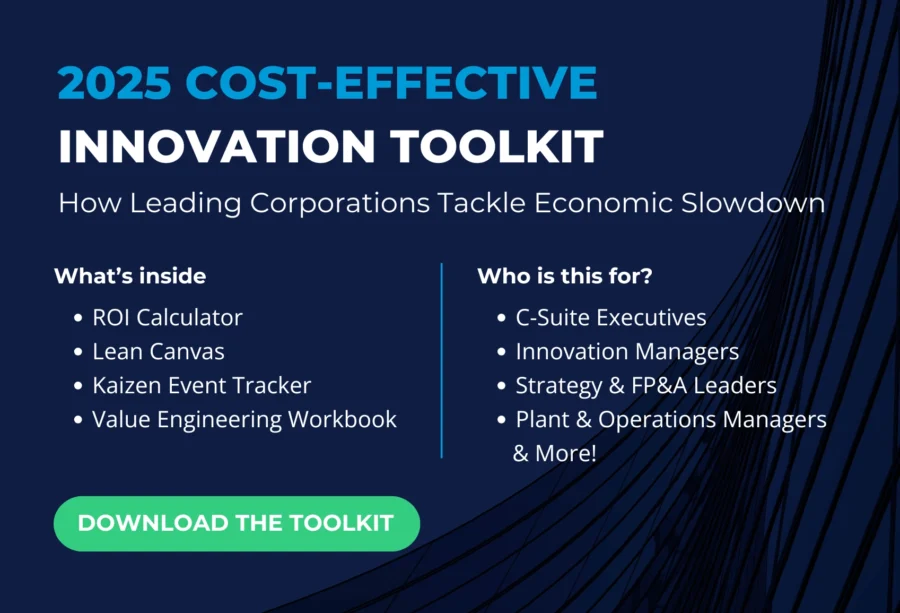
Frequently Asked Questions
WSJF vs. RICE: Which is better?
RICE sets priorities by calculating the number of individuals who will benefit, the impact, the level of certainty (confidence), and the amount of work required (effort), while WSJF maximizes economic value by minimizing the cost of delay.
WSJF is best for Agile teams, and RICE is most suitable for product teams.
How to calculate innovation ROI?
Innovation ROI = [(Gains from innovation – Innovation Investment) / Innovation Investment] x 100%
Gains from Innovation: Includes new revenue, cost savings, productivity improvements, and other measurable business benefits.
Innovation Investment: The total costs of R&D, people, pilots, marketing, launch, and supporting infrastructure.
Innovation ROI: Key Aspects
84% of CEOs rank innovation critical for growth. But implementing innovation is where the challenges arise.
According to a recent NTT Data report, only 21% of organizations consistently meet their innovation goals. The gap between intent and impact is huge.
Companies that lead in innovation delivery are 54% more likely to achieve net profit margins of 10% or above. Moreover, 64% of innovators are more likely to exceed leadership expectations on returns from innovation investments.
Return on innovation investment quantifies revenue gains and captures cost savings, strategic flexibility, improved capabilities, and even cultural shifts that strengthen long-term competitiveness.
Global R&D investment reached USD 2.8 trillion in 2023, which is nearly three times the level in 2000. However, only 6% of CEOs report being satisfied with the outcomes of their innovation spend. This suggests that while innovation budgets are expanding, tangible returns remain unachievable.
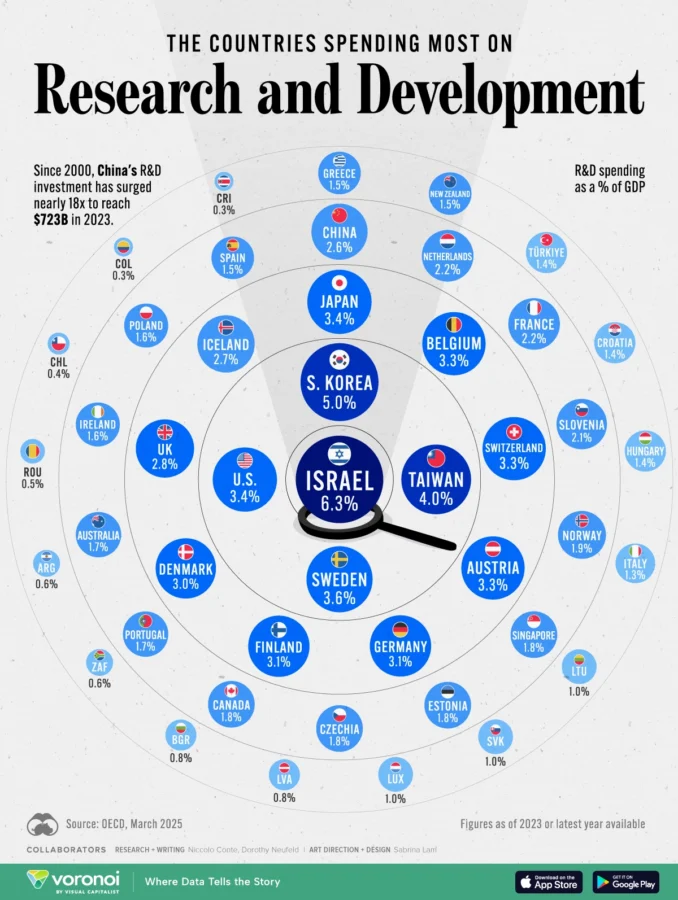
Source: Visual Capitalist
That is why more leaders are turning to structured approaches like WSJF, Monte Carlo simulations, and digital Stage-Gate models. These frameworks link innovation spending to tangible outcomes and close the gap between aspiration and actual ROI.
1. Multi-Dimensional Value Capture
Leading organizations measure returns from multiple dimensions.
Operational efficiency is a major metric. Businesses implementing automation technologies with redesigned operational processes report a 30% reduction in operational costs within the first year.
At the same time, data and IP assets are also gaining strategic importance. Nearly 77% of businesses link data quality to better decision-making and consider IP portfolios critical to long-term valuation.
Another metric that is increasingly tracked is the speed at which teams upskill, adopt tools, and respond to feedback. 58% of employees are more likely to have skills in their talent pipeline to meet the evolved market.
2. Cost of Delay Discipline
Cost of delay shows the financial impact of delaying high-value features or projects. For example, delaying a product feature expected to generate USD 20 000 per week for just 10 weeks results in USD 200 000 in lost value.
As a result, CoD is a key metric in prioritization frameworks, especially in agile environments. Frameworks (like WSJF) widely utilize CoD for teams to deliver the highest-value work first. This leads to quicker decisions, smarter resource use, and stronger innovation returns.
3. Stage-Gate Governance
Stage-Gate brings structure to innovation. It tests ideas early, funds what works, and stops what doesn’t. Companies using modern Stage-Gate models see up to 39% faster time-to-market and 31% lower development costs.
63-78% of enterprises also meet their profitability and delivery goals. Real-time gate reviews make it easier to spot weak projects and redirect funding.
This level of discipline improves transparency and accountability, both of which are essential for board-level oversight of innovation portfolios.
4. Risk-Adjusted Financial Metrics
Instead of relying only on NPV or IRR, many companies now adjust for risk by factoring in things like technical uncertainty, market readiness, and past success rates.
Some also add a risk premium on top of their cost of capital to reflect the uncertainty of new technologies. Tools, like Monte Carlo simulations, allow teams to model a range of possible outcomes, not just one.
Scorecards also track ROI, risk, and project readiness at every stage. This keeps financial discipline in place from start to finish.
5. Learning Velocity & Option Value
Learning velocity, or the speed at which teams absorb insights and adapt, is treated as a measurable KPI. Companies using learning analytics in project dashboards are seeing faster and better upskilling.
At the same time, innovation is generating “option value” through reusable assets like application programming interfaces (APIs), enriched datasets, and digital infrastructure.
Gartner predicts that over 80% of large software engineering organizations will build platform engineering teams as internal providers of reusable solutions. Further, firms that invest in reusable capabilities report a 22% higher long-term ROI on innovation initiatives.
Why Many Innovation Projects Miss ROI Targets
1. Underestimating the Cost of Delay
Delays are expensive. A 12-month holdup in launching a car can cost OEMs USD 200 million and suppliers USD 15 million, according to PwC. In India, 75% of enterprises face project delays, losing an average of INR 56 million.
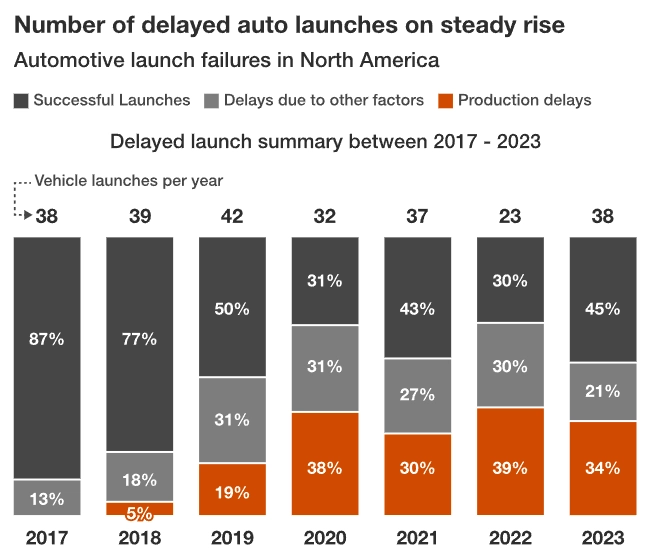
Source: PwC
Even AI isn’t immune; 46% of generative AI pilots stall between piloting and production due to security concerns.
2. Lack of Clear Kill-Pivot-Scale Governance
Without clear rules for when to kill, pivot, or scale, innovation efforts often drift. Stage-Gate frameworks show a 2.5 times higher launch success rate, which is far higher than the 24% seen with companies that do not innovate.
Still, most teams skip formal decision points. In AI, 75% of corporate initiatives fail to deliver ROI.
3. Failure to Exploit Time-Limited Tax Incentives
In 2019 alone, US businesses left nearly USD 60 billion in R&D tax credits unclaimed. The issue persists due to complexity and a lack of ownership. The 2025 Section 174 fix allows businesses to retroactively claim back 8% of R&D spending.
Still, most small firms only claim a fraction of what they qualify for. Startups often miss payroll tax offsets worth up to USD 500 000 annually.
7 Innovation ROI Frameworks that Deliver Results

1. Stage-Gate (Idea-to-Launch)
The stage-gate process breaks innovation into a series of defined stages, like scoping, business case development, testing, and launch.
Each stage ends with a “gate,” where leadership reviews evaluate business cases, assess risks, and analyze results before allocating additional resources. These gates ensure accountability, kill underperforming projects early, and sharpen resource focus.
Adopted by almost 80% of North American enterprises, Stage-Gate is regarded as the gold standard for structured innovation management.
Companies that implement this framework consistently report 63 to 78% product success rates, far surpassing the 24% average among firms without formal processes.
Real-World Applications
BASF: Stage-Gate for R&D Acceleration
BASF institutionalized the Stage-Gate process in its global R&D teams to improve decision-making and reduce inefficiencies in product development. This approach reduced average development time and boosted NPV.
IBM: Design Thinking for Digital Product ROI
IBM applied design thinking to accelerate digital product development, including its Watsonx payroll app. This reduced launch time and delivered a 301% ROI. The project yielded USD 36.3 million in 3-year NPV, primarily through faster delivery, increased profitability, and fewer design defects.
Use Cases of the Stage-Gate Framework
Ideal for Complex, High-Stakes Innovation
Stage-Gate is best suited for industries with long R&D timelines, high regulatory oversight, and multi-functional involvement.
For example, the pharmaceutical, chemical, and aerospace industries face significant cost, complexity, and compliance requirements in their innovation processes.
Supports Structured, Cross-Functional Execution
The framework brings alignment across engineering, product, marketing, finance, and legal teams. This ensures that every phase of development is grounded in shared milestones, business objectives, and risk controls.
Enables Informed Portfolio Decisions at Every Gate
Leaders gain visibility into key financial metrics (NPV, IRR), real-time project risk, and strategic fit. It empowers them to dynamically reprioritize initiatives and make early kill-pivot-scale decisions that protect capital and accelerate returns.
Popular Stage-Gate Tools
- Stage-Gate Navigator: Streamlines gated decision-making with customizable workflows to improve project visibility and accelerate time-to-market.
- Planview: Provides end-to-end portfolio and resource management for strategic alignment and optimized innovation investments.
- Sopheon Accolade: Integrates strategy, governance, and execution in one platform to ensure innovation projects deliver measurable business outcomes.
2. Lean Startup (Build-Measure-Learn)
The Lean Startup framework focuses on rapid, iterative product development through the “build-measure-learn” loop. Teams develop a minimum viable product (MVP), release it quickly, measure real user feedback, and use those insights to refine or pivot the solution.
The process is grounded in experimentation and validated learning to reduce time-to-market and avoid over-investing in unproven ideas.
A survey report indicates that combining agile with a lean approach leads to a 70% success rate in software project development.
Real-World Application
Dropbox: Lean Startup for Viral Product-Market Fit
Dropbox leverages this framework to validate its core value proposition before building a full product. Instead of coding first, they launched a simple explainer video demonstrating the product’s functionality.
This MVP-driven validation avoided unnecessary development costs and steered the team toward features users actually wanted. The feedback loop boosted Dropbox’s early growth by reaching over 4 million users in 15 months.
Use Cases of the Lean Startup Framework
Ideal for Fast-Moving, High-Uncertainty Innovation
This methodology is suitable for early-stage startups, SaaS platforms, and digital products operating in fast-changing markets where speed and flexibility are critical to gain traction.
Supports Agile, Customer-Centric Execution
Lean aligns product, UX, and engineering teams around continuous feedback, rapid testing, and real-time customer insights. This reduces time spent on unnecessary development and enables faster pivots.
Enables Scalable Learning and Growth
Organizations can track engagement, conversion, and retention metrics in real-time to make data-backed investment decisions and scale features that demonstrate validated demand.
Popular Lean Startup Framework Tools
- LaunchDarkly – Enables safe, incremental innovation through feature flagging, dark launches, and instant rollbacks. It supports teams testing features on real users without full-scale deployment and accelerates validated learning cycles.
- Split.io – Offers robust experimentation and A/B testing with progressive delivery and instant reversibility. This allows teams to validate product ideas with real-world data before scaling.
- Amplitude – Delivers deep user behavior analytics to track engagement, retention, and product usage patterns. Empowers evidence-based MVP iteration and faster decision-making across teams.
3. Design Thinking / Double Diamond
Design thinking is a human-centered innovation framework that focuses on empathy, ideation, rapid prototyping, and iterative problem-solving. The process consists of four stages: discover, define, develop, and deliver. This structure encourages teams to explore multiple problem spaces before converging on the best solution.
Companies such as IBM adopting this approach report two times faster time-to-market and up to a 75% reduction in design time. Data from McKinsey also shows that design thinking practices see a 56% higher return than those that don’t.
Real-World Applications
IBM: Design Thinking for Enterprise-Scale Digital Product ROI
IBM institutionalized design thinking to accelerate digital innovation across its product portfolio, which includes the Watsonx payroll app. The structured process reduced launch time from 9 months to just 4, while improving alignment across product, design, and engineering.
The initiative delivered a 301% ROI, with a 3-year NPV of USD 36.3 million. Key benefits included USD 20.6 million in accelerated project delivery, USD 18.6 million in improved portfolio profitability, and a 50% reduction in design defects.
Use Cases of the Design Thinking Framework
Ideal for Customer-Facing Innovation and Service Transformation
In industries like finance, healthcare, education, and enterprise software, it is crucial to redesign services, touchpoints, or digital interfaces.
Supports Empathy-driven, Cross-functional Collaboration
Design thinking aligns product managers, designers, marketers, and engineers around shared user insights. This encourages collaborative problem-solving and creative confidence across teams.
Enables Experience-led Growth and Differentiation
By continuously testing low-fidelity prototypes with real users, organizations build more intuitive, accessible, and sticky solutions. This results in stronger brand loyalty and faster market uptake.
Popular Design Thinking Tools
- IBM Enterprise Design Thinking (ETD) – Enables teams to better understand users better through research. It encourages quick idea generation and testing with diverse groups. The governance model also ensures design intent is preserved throughout delivery.
- Miro – Allows design thinking workshops, remote or hybrid, by supporting empathy maps, journey mapping, affinity clustering, and ideation boards.
- Figma – It supports the Prototype and Test phases by allowing designers to create interactive mockups and share them with stakeholders instantly. With built-in collaboration features, teams co-create and iterate on UI/UX elements in real time.
4. Monte Carlo Risk-Adjusted NPV
Monte Carlo risk-adjusted NPV takes the usual net present value analysis and adds a way to account for uncertainty in the results of new ideas.
By running thousands of simulations using variables like market size, technical success, regulatory timelines, and adoption rates, it generates a distribution of possible NPVs rather than a single estimate.
In a large-scale energy plant case study using 50 000 simulations, the probability of achieving a positive NPV was 86.1%, and 91.9% using IRR criteria.
The Monte Carlo approach also quantifies the value of risk mitigation. In a manufacturing investment example, the simulated mean NPV exceeded the single-point forecast by EUR 110 948. This offered a full view of possible upside and downside outcomes.
Real-World Application
Novelis: Monte Carlo Simulation for Innovation Portfolio Control
Novelis applied Monte Carlo Risk-Adjusted NPV using @RISK and PrecisionTree to assess its high-risk R&D portfolio with greater clarity. By modeling stage-wise success probabilities and simulating varied input assumptions, the company replaced subjective estimates with quantifiable value ranges.
The improved transparency enables Novelis to identify critical risk drivers and enable smarter go/no-go decisions. This enhances portfolio control and aligns commercial and technical teams around data-backed innovation bets.
Use Cases of the Monte Carlo Risk-Adjusted NPV Framework
Ideal for High-Uncertainty, High-Impact Innovation
This approach works best in emerging tech, deep science, and advanced R&D portfolios where the outcomes depend on multiple interdependent and volatile variables.
Supports Data-Driven Scenario Planning
Enables finance and product teams to test different assumptions and see how they affect the full range of possible innovation outcomes.
Enables Precision Portfolio Management
Allows leaders to compare innovation initiatives based on risk-adjusted return, expected value-at-risk, and scenario sensitivity.
Popular Monte Carlo Simulation Tools
- @RISK – Integrates with Excel to run Monte Carlo simulations for finance and innovation teams to model uncertainty in key variables like cost, market size, or adoption rate. It generates probability distributions for NPV and the range of possible outcomes to make risk-informed go/kill decisions.
- Oracle Crystal Ball – Extends Excel’s capabilities with forecasting, optimization, and Monte Carlo simulation. It tests thousands of variable combinations to model complex innovation scenarios. Decision-makers assess value-at-risk and identify assumptions driving volatility.
- PyMC – This open-source Python library for probabilistic programming and Bayesian inference. allows teams to build custom simulation models. This supports more adaptive, data-driven innovation portfolio planning.
5. Real Options Valuation
ROV treats innovation investments as a series of flexible decisions. It recognizes that teams can delay, expand, contract, or abandon projects based on how future conditions evolve.
Instead of locking capital into rigid forecasts, ROV assigns value to managerial flexibility, especially in multi-phase innovation or platform development.
It is particularly useful in areas like platform innovation, where early signals like user adoption, regulatory progress, or ecosystem readiness trigger a full rollout.
In a commercial real estate development, applying the Samuelson-McKean real options model added an option premium of INR 154 million. This offered an 85% strategic return to the developers.
Real-World Application
Spanish Viticulture Co-op: ROV for Capital-Intensive Agritech Investment
A Spanish agricultural cooperative evaluated an agritech platform involving vineyard robotics and precision irrigation. Instead of investing upfront, they used ROV to assign financial value to waiting for technical maturity and early user adoption signals.
By staging their investment and deferring full deployment, the cooperative avoided sunk costs while preserving the right to scale once the technology proved viable.
Use Cases of the ROV Framework
Ideal for Staged, Uncertain Innovation Paths
Industries like energy, agriculture, advanced manufacturing, and digital platforms are best suited for this approach. Initial investments create opportunities for further development in these cases.
Supports Agile Investment Decisions
Allows leaders to delay large-scale commitments until key technical, regulatory, or market uncertainties are resolved.
Enables Scalable Capital Efficiency
It promotes a capital-light approach to risky innovation ventures, yet maintains the capacity to grow rapidly once milestones confirm success.
Popular ROV Tools
- Palisade DecisionTools Suite – Embeds real options logic directly into an Excel sheet with decision trees and risk-adjusted NPV tools. It offers value flexibility to teams, such as deferring, expanding, or abandoning innovation projects.
- Oracle Crystal Ball – Adds ROV modeling to traditional discounted cash flow (DCF) by simulating multiple future paths. This makes it easier for finance teams to quantify strategic options under uncertainty.
6. WSJF / Cost-of-Delay Divided by Duration (CD3)
Weighted shortest job first, also known as CD3, supports Agile teams in prioritizing work based on economic impact. It calculates the cost of delay and divides it by task duration for teams to focus on what drives the most value, fastest.
WSJF offers product and engineering teams a data-backed way to make trade-offs. It is especially effective in fast-moving environments where timing is everything.
Across simulations, applying WSJF consistently cuts opportunity cost far more than traditional methods. It also speeds up delivery. By encouraging smaller batch sizes, WSJF allows teams to ship high-impact features faster.
Real-World Application
PlayStation Network: WSJF Prioritization for High-ROI Agile Delivery
Sony Interactive Entertainment scaled agile across its global PlayStation Network organization by implementing WSJF to streamline backlog prioritization. Facing competing priorities across 50+ globally distributed teams, Sony applied WSJF to quantify the economic value of delay and sequence features accordingly.
By calculating the cost of delay over job duration during portfolio planning, the company aligned delivery with business impact. This led to faster deployment of critical features, reduced low-value effort, and higher return on engineering time.
Use Cases of the WSJF Framework
Ideal for Agile Teams in Fast-Paced Environments
Best suited for product organizations, digital transformation programs, and software-centric projects where multiple initiatives compete for shared capacity and time-sensitive delivery matters.
Supports Value-Aligned Backlog Execution
Enables teams to rank backlog items based on their real-time economic value, ensuring the most valuable and time-sensitive features rise to the top.
Enables Faster Delivery with Less Rework
Reduces thrashing, rework, and low-ROI efforts by ensuring that small, high-impact features are delivered early. This maximizes incremental business outcomes.
Popular WSJF Tools
- SAFe Portfolio Kanban – Enables Agile teams to visualize and manage work at the portfolio level while applying WSJF scoring to each initiative. It calculates the cost of delay and compares it against the job size.
- Jira Align – Integrates WSJF into daily Agile operations and automates scoring during backlog grooming, sprint planning, and PI forecasting. It allows cross-functional teams to make transparent, data-driven trade-offs between competing features or epics.
7. RICE Scoring
RICE is a prioritization framework that allows product teams to evaluate and rank initiatives based on four factors: Reach, Impact, Confidence, and Effort. Each initiative is scored using a formula: (Reach x Impact x Confidence) / Effort.
This approach quantifies how many users will benefit, how significantly it will affect them, how confident the team is in the assumptions, and how much work is required. RICE is effective for comparing multiple product ideas with similar strategic goals but different scopes and levels of uncertainty.
Moreover, RICE enables balanced, rational prioritization in environments where time and resources are limited. It brings transparency to roadmap decisions and prevents teams from overcommitting to low-impact or high-effort work.
Real-World Application
Canto leverages RICE for Faster Feature Delivery
Canto adopted Productboard to bring structure and clarity to its product development efforts. With multiple feature requests competing for limited engineering capacity, Canto used RICE to evaluate each initiative.
By scoring and sequencing backlog items, the company aligned feature delivery with real business value. This enabled faster execution of high-impact features, avoidance of low-confidence development, and stronger ROI on product investments.
Use Cases of the RICE Scoring Framework
Ideal for Cross-Functional Product Teams
Best suited for teams managing large feature backlogs, enhancement requests, or competing internal initiatives where effort varies and user value is hard to compare directly.
Supports Strategic, Data-Informed Tradeoffs
Enables teams to evaluate initiatives based on expected value as well as effort required and confidence in success. This encourages thoughtful prioritization in uncertain environments.
Enables Objective, Repeatable Prioritization
Offers a structured scoring system to reduce bias and noise in backlog grooming. It is applicable across teams and product lines.
Popular RICE Scoring Tools
- Airtable RICE Template – Provides a ready-to-use, customizable table for teams to input RICE values. It then automatically calculates scores and visualizes priorities for fast comparisons across multiple ideas.
- Productboard – Let’s teams score product features using RICE directly within their roadmap. It connects each initiative to user needs, effort estimates, and business impact to prioritize what delivers the most value with the least effort.
Key Innovation ROI Metrics and KPIs

| # | Metric | What it Tracks | Typical Payback Timeline Examples |
|---|---|---|---|
| 1 | Return on Innovation Investment | Net economic gain from innovation versus total innovation spend | Cloud programs pay back in 12-18 months; SaaS firms report a median of 1.4 years |
| 2 | Cost of Delay (CoD) | Value lost per unit time when launches are delayed | Drug development delay burns USD 500 K revenue + USD 40 K trial cost |
| 3 | Simple / Discounted Payback Period | Time needed to recoup the initial outlay | SaaS median payback is 1.4 years, which aligns with capital efficiency benchmarks. |
| 4 | Risk-Adjusted IRR (RA-IRR) | Internal rate of return adjusted for technical & market risk above WACC | Pharma pipelines average 5.9% IRR |
| 5 | Innovation Efficiency Ratio (IER) | Value (sales, profit, patents) generated per USD of innovation spend | Consumer sectors track innovation performance annually using IER benchmarks |
| 6 | Stage-Gate Success Rate | Percentage of projects that reach profitable launch under gated governance | Structured programs hit 63-78 % success & time-to-market reduced by 14 months (~39 %) |
| 7 | Learning Velocity / Cycle Time | The speed at which teams convert hypotheses into validated releases | Elite teams keep cycle time less than 1 week and ship 25-30 features per sprint |
| 8 | Real-Options Value Uplift | Extra NPV unlocked by keeping flexibility to scale, defer, or abandon | Innovation frameworks boosted the vineyard tech project NPV by 15%. |
| 9 | AI ROI | Net return on scaled AI use cases | IBM 2025: Structured innovation programs yield 14% average ROI. |
How to Select the Right Innovation ROI Framework
1. Begin with a Clear Innovation Maturity Check
- Level 1 (Initiated): Innovation is ad hoc, with isolated experiments and minimal KPIs. Lean Startup is ideal here, offering rapid MVP cycles, low-cost experiments, and quick pivots. Over 60% of firms fall into this category.
- Level 2 (Defined): Idea evaluation processes exist, but are inconsistent. A combination of Lean Startup and RICE scoring works effectively as they support prioritization. This approach improves speed-to-market and significantly enhances product-market fit.
- Level 3 (Managed): Firms at this stage have formal innovation pipelines, budgets, and dashboards. Stage-Gate combined with WSJF fits well here. This enables structured decision-making and economic prioritization. Organizations using Stage-Gate achieve a 63% average success rate.
- Level 4 (Optimized): At this advanced stage, innovation is managed as an investment portfolio, supported by AI analytics, real options modeling, and dynamic dashboards. Strategic Portfolio Management (SPM) and Monte Carlo economic value added (EVA) are optimal frameworks.
2. Match Framework to Project Scope and Complexity
- Regulated and Capital-Intensive Projects: The pharma, automotive, and consumer goods industries require structured Stage-Gate or Eco-Stage-Gate frameworks. They incorporate compliance and ESG checkpoints. Companies using these frameworks see 78% launch success and a 39% faster time-to-market.
- Digital and Agile Projects: SaaS and digital products benefit from WSJF or Lean Startup methodologies. These agile frameworks effectively reduce the cost of delay.
- High-Uncertainty and Platform-Level Innovations: Complex moonshot projects require real options valuation integrated within strategic portfolio management. This approach enables staged investments and flexibility in high-risk scenarios.
- Large-Scale Portfolios: Organizations managing extensive project portfolios (100+) benefit from AI-powered portfolio platforms like ITONICS or Planview, which automate prioritization, flag redundancies, and reduce planning efforts.
3. Align Framework to Cultural and Decision-Making Norms
- Organizations with centralized decision-making and high power distance thrive with structured Stage-Gate governance.
- Agile, transparent cultures perform better with Lean Startup and WSJF prioritization methods.
- Consensus-driven organizations find structured roles within Stage-Gate useful to balance alignment and timely progress.
4. Confirm Resource and Capability Readiness
- If analytics capabilities are limited, start with basic KPIs rather than complex dashboards or simulations.
- Organizations with constrained budgets should opt for lightweight methodologies like Lean Startup or RICE scoring.
- Digitally mature companies achieve significantly higher profit margins and can confidently leverage advanced frameworks like real options valuation and AI simulation tools. Manufacturers specifically report substantial benefits from integrating AI within Stage-Gate frameworks.
Best Practices To Measure & Optimize Innovation ROI
1. Translate Strategy into Measurable Innovation KPIs
What to practice: Tie every innovation initiative to a short stack of KPIs, like return on innovation investment, cost of delay, and percentage of revenue from new products (less than 3 years old). Refresh them quarterly and include them in board-level reviews.
Why it matters: Only 6% of CEOs are satisfied with their innovation performance. Yet, firms that embed ROI metrics see a return boost from innovation programs.
2. Enforce Stage-Gate Discipline – Backed by WSJF Prioritization
What to practice: Run all projects through formal stage-gates with kill/pivot/scale decisions, and prioritize backlog using WSJF to minimize the cost of delay.
Why it matters: Stage-Gate adopters report 63 to 78% launch success vs. just 24% in ad hoc settings.
3. Manage Innovation Like a Diversified Investment Portfolio
What to practice: Use strategic portfolio management (SPM) tools to monitor mix, risk, and ROI across core, adjacent, and transformational bets.
Why it matters: Firms with real-time dashboards and automation cut manual effort by 40%.
4. Apply Probabilistic Models to Innovation Forecasting
What to practice: Replace single-point ROI estimates with Monte Carlo simulations and risk-adjusted NPV modeling to understand upside, downside, and timing risks.
Why it matters: Philips ran 10 000 simulations to narrow its projected value spread and reduce portfolio overruns
5. Instrument Your Innovation Pipeline with AI Dashboards
What to practice: Move from static reporting to AI-powered dashboards that alert leadership to emerging ROI risks and opportunities in real time.
Why it matters: Wayfair’s AI-tuned “lost-sales” metric improved profit per visit. Scaled firms report a median 14% ROI boost from AI.
6. Create Psychological Safety and Measure Learning Velocity
What to practice: Encourage open risk sharing, set incentives around learning cycles, and enforce weekly MVP iterations to drive experimentation at speed.
Why it matters: MDPI’s 2024 meta-analysis shows report path coefficients up to 0.72 linking antecedents to psychological safety, which in turn supports learning/innovation. Weekly MVP loops increase product-market fit and reduce sunk cost waste.
7. Exploit R&D Tax Incentives Proactively
What to practice: Align finance and innovation functions to actively plan for expenses under R&D tax codes like Section 174 and reinvest the cash relief into high-potential ideas.
Why it matters: US firms can unlock 6% of innovation spending through the full R&D tax credit, yet many miss it due to disconnected budget ownership.
8. Benchmark Innovation Efficiency and Monitor Product Mix Health
What to practice: Track innovation efficiency ratios, which is a value or IP per dollar spent, and monitor what percent of revenue comes from products launched in the past three years.
Why it matters: Market leaders in sectors like cosmetics outperform peers by optimizing IER. When less than benchmark revenue comes from new products, it signals pipeline stagnation and future margin compression.
9. Upgrade Frameworks as Your Capabilities Scale
What to practice: Reassess framework fit every year. Start with Lean + RICE, but graduate to Stage-Gate + Monte Carlo or SPM + ROV as your data, budget, and team maturity evolve.
Why it matters: Just 1% of firms reach “optimized” innovation maturity, but those that do see double-digit ROI advantages and adapt their frameworks annually.
Explore the Latest Innovations & Startups to Stay Ahead
With thousands of emerging technologies and startups, navigating the right investment and partnership opportunities that bring returns quickly is challenging.
With access to over 7 million emerging companies and 20K+ technologies & trends globally, our AI and Big Data-powered Discovery Platform equips you with the actionable insights you need to stay ahead of the curve in your market.
Leverage this powerful tool to spot the next big thing before it goes mainstream. Stay relevant, resilient, and ready for what is next!

